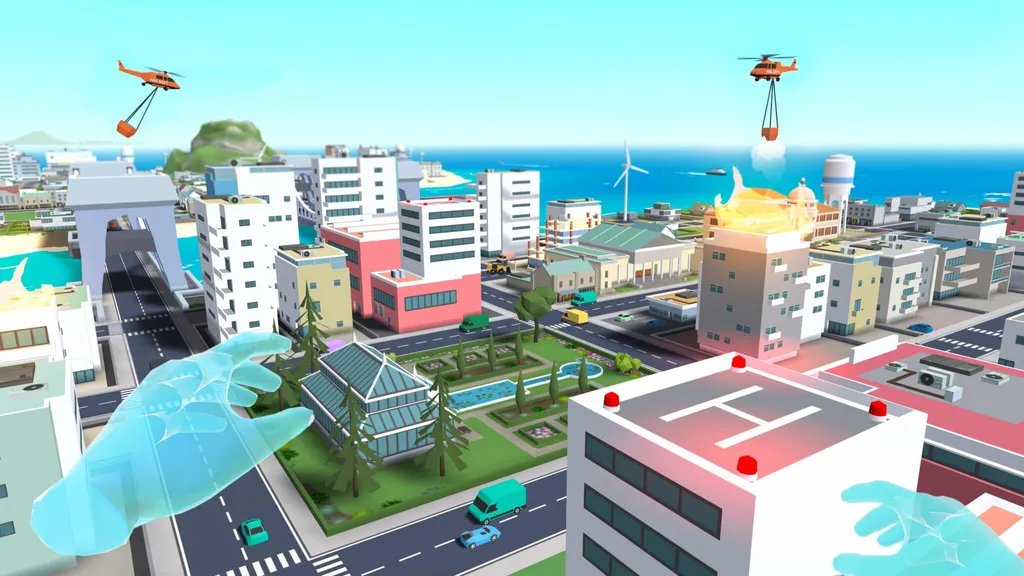Little Cities presents a new take on the city simulator genre, built from the ground up for VR. While it takes a more relaxed approach than traditional titles, the result is a concise, native VR game with a solid foundation and plenty of room to expand. Read on for our full Little Cities review.
Quest owners now have a choice when it comes to the city building genre, with Little Cities and Cities: VR available on the platform. That being said, each game takes a vastly different approach.
As covered in our review, Cities: VR is more traditional, attempting to translate the complexity and expansiveness of its parent game, Cities: Skylines, into VR and give the player as many options as possible.
On the other hand, Little Cities is an entirely new concept, built from the ground up for VR. Most importantly, developers Purple Yonder have deftly adapted the genre’s core concepts to work more intuitively for VR. The end result is a casual, pleasant city simulator experience for Quest that will be enjoyable for newcomers to the genre and VR alike.
[vc_row][vc_column][vc_cta h2=””]Little Cities Review – The Facts
Platforms: Quest, Quest 2,
Release Date: May 12
Developer: Purple Yonder
Publisher: nDreams
Price: $19.99[/vc_cta][/vc_column][/vc_row][vc_row][vc_column][vc_column_text]
Start With The Basics
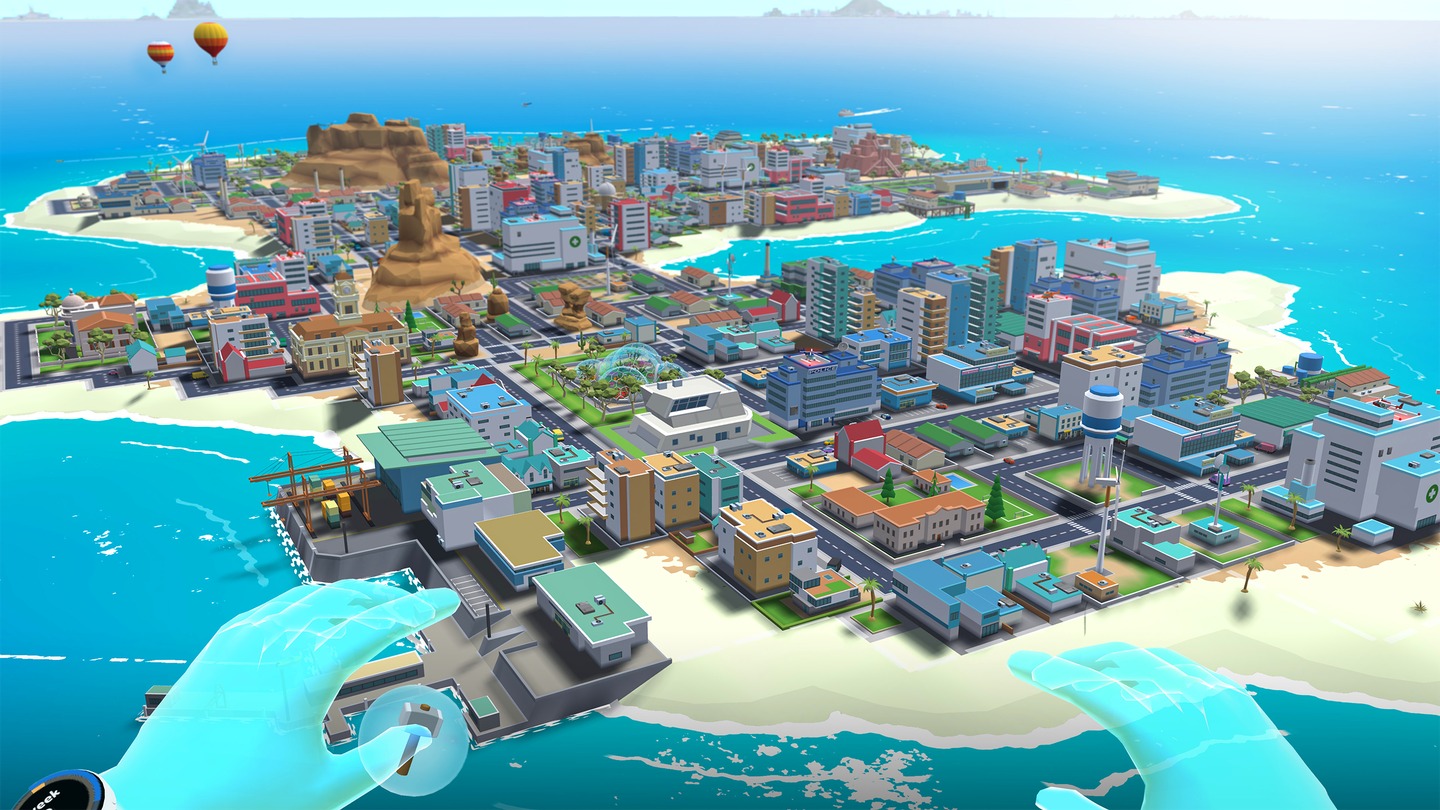
Little Cities operates on a scalable isometric grid, reminiscent of late 90s sims like Roller Coaster Tycoon. I played comfortably in an armchair, but you can scale the world to work at roomscale too, allowing you to walk around a room and manage your city from above.
No past experience is required, but if you’ve played city simulator games before then the premise will feel familiar. You start on a small island and build out your city’s roads and services, zoning areas as residential, industrial or commercial. You’ll gradually expand and level up your city, unlocking more land and essential services that increase the simulation’s complexity. You’ll have to maintain population happiness and city profitability, while also dealing with unique environmental challenges.
It sounds like a lot to manage on paper, but elements are introduced at a neat pace that ensures you’re never too overwhelmed and always have a clear goal to work toward.
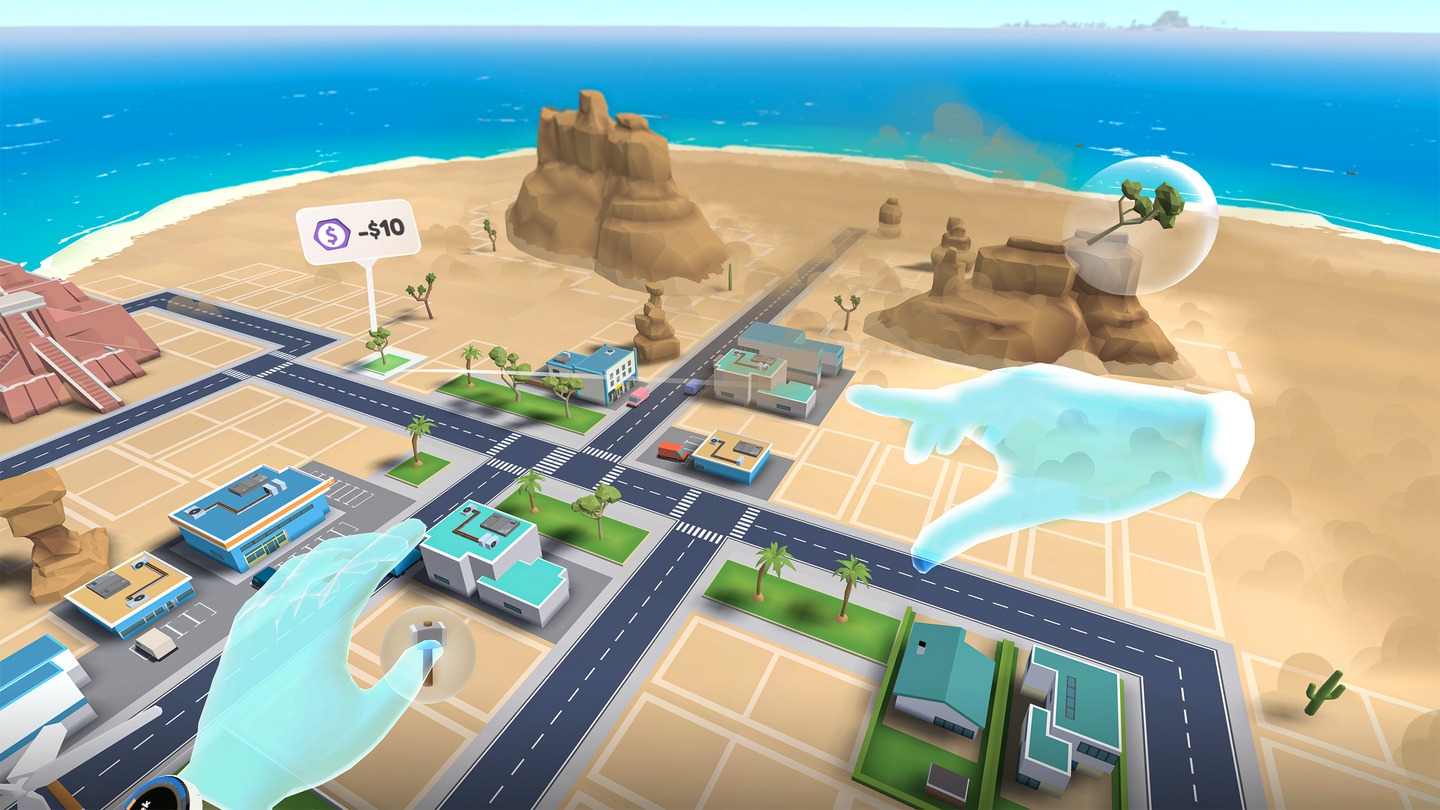
Many staples of the genre are present in Little Cities – you’ll be dealing with traffic flow, utilities (such as water, electricity, cell service), emergency services (police and fire stations), healthcare, education, parks and more. However, the approach is slightly different. City services are managed almost exclusively through design and layout – your city will prosper or flounder based on how and where you place elements as they unlock.
Services in Little Cities operate through a distance-based catchment system. When placing a police station, for example, a large circle will indicate the catchment area that it will service. Placing something on the far left of one island may mean the far right is excluded. Things get more complex as you progress – catchment areas can overlap into land or other islands you’ll unlock later on, or be bolstered by upgrading buildings or placing other relevant services nearby.
Utilities like water and electricity operate purely on availability – you won’t need to route pipes or electrical wires across the city, but just generate enough for your current population. Even roads are distilled down to their purest form – the maps’ isometric nature means everything is straight, neat and aligned to the grid, with only one road size and type to choose from.
VR-First Design
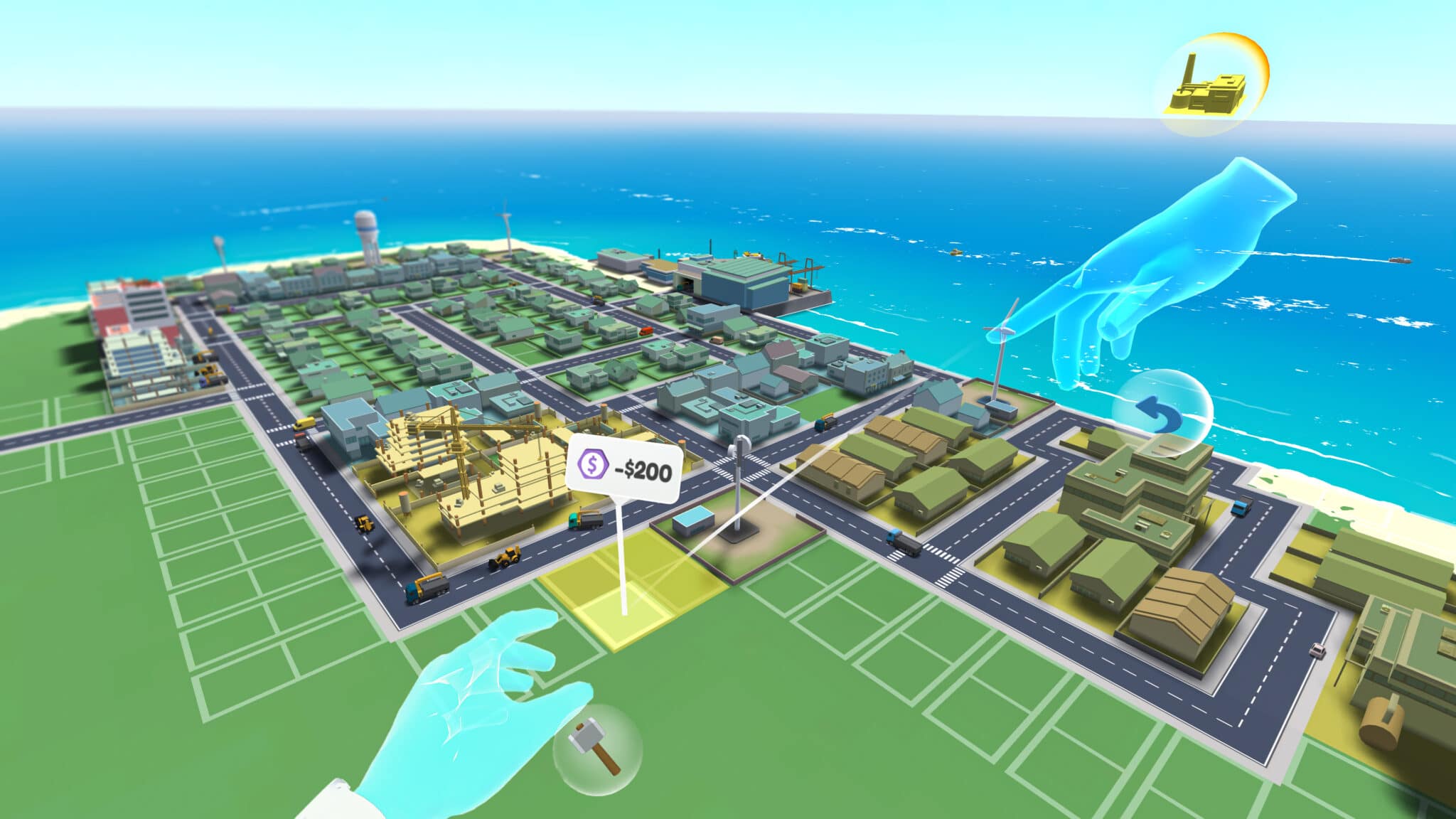
Little Cities is therefore a simplified version of a city simulator from a management perspective, but much more immersive in terms of design. There’s practically no menu-based city management. You won’t be adjusting settings, managing loans or trawling through finance menus and budgets. Everything is centered around layout and design.
This is the perfect approach for VR, and it’s matched with an interface and control scheme that’s a joy to use. The palm of your left hand displays bubbles that can be popped with your right (or selected with a cursor), allowing you to zip between sub-menus and make quick selections from muscle memory. The system is zippy, tactile and minimizes errors, letting you focus on building without thinking about the menu itself.
Your left wrist also has a watch that, when looked at, expands into a handheld status menu displaying key stats – population and happiness, your city level, your next unlock, utility availability, and tips on what to do next.
All the menus and controls feature satisfying audio effects and feel weighty and present. It’s a great example of intuitive VR user experience that other games should take note of.
A Beautiful Cityscape
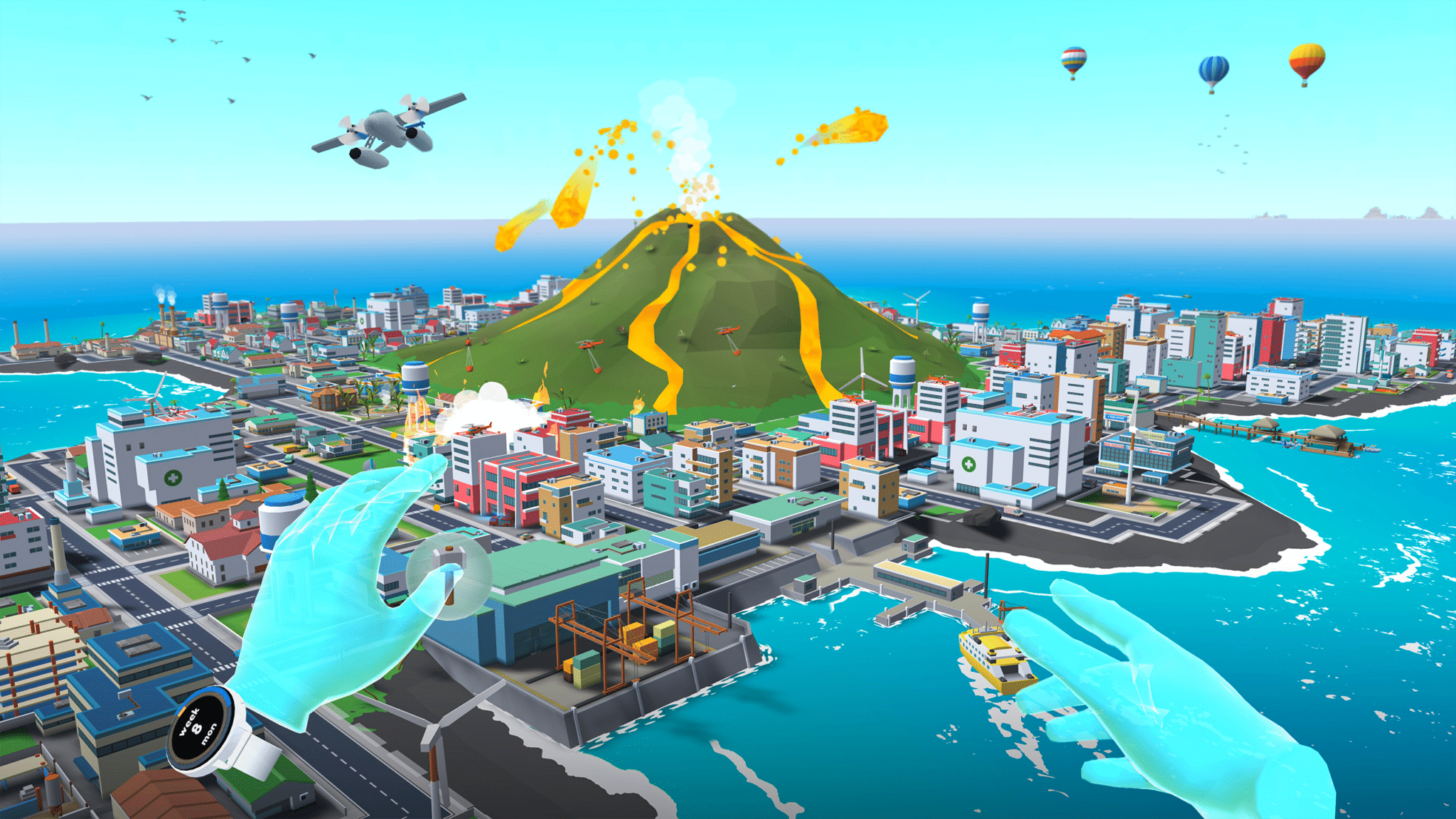
Visually, the game looks stunning on Quest. Everything runs flawlessly and Purple Yonder clearly understand the limits of the hardware, working well within them. You can scale the city to get up close or look down from afar, with lateral movement mapped to the right grip button. But no matter what angle you’re looking from, Little Cities is a delight to behold.
The art style is simple yet detailed, filled with surprises and dynamic events connecting the sky to the city below. Whether it’s a flock of birds taking off, a plane leaving a smoke trail in its wake, or a convoy of hot air balloons rising up around you, there are so many beautiful touches that breathe life into the city. It goes a long way for immersion, and helps you feel connected to the city. That’s not to mention the fantastic soundtrack either, which helps bring the entire package together.
Room For Upgrades
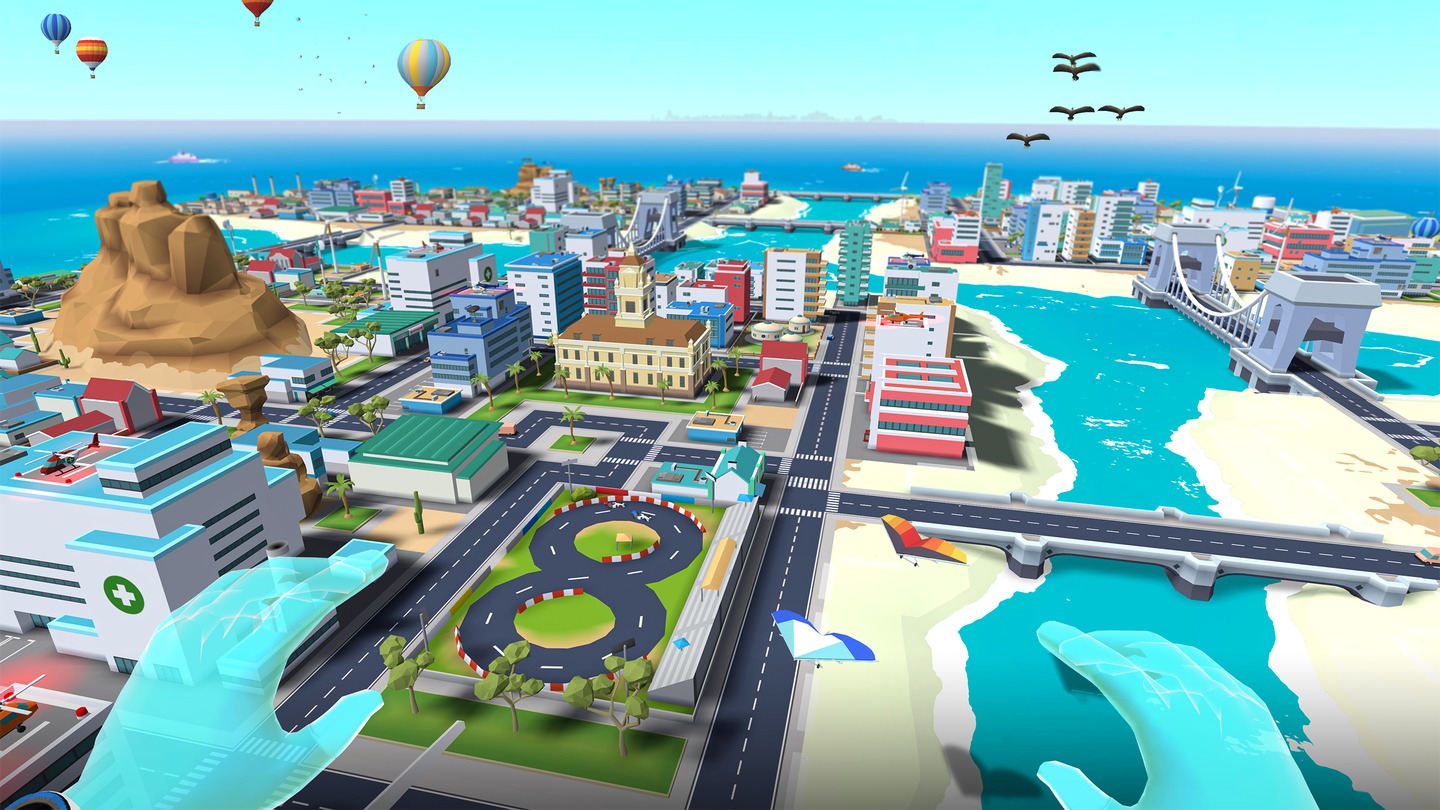
That being said, there are some areas for improvement. While the design-first approach is perfect for VR, the game does end up feeling a little easy because of it. Perhaps others with less city simulator experience would struggle more, but for me the game rarely felt challenging. That isn’t to say it was uninteresting, but things do start to feel a bit rote toward the end.
The campaign consists of six maps of varying size and layouts, each presenting some unique unlocks and environmental challenges. Excluding the first tutorial map, each map is complete when you reach level 25. Your mileage might vary, but they took me somewhere between an hour or two to finish each, on average.
By map four, the gameplay remained entertaining but a bit repetitive, and the environmental challenges didn’t add much difficulty either. I finished the campaign wishing there had been either additional maps with added variety, or increased difficulty across the existing six maps. It doesn’t help that the isometric layout slightly limits your creative options. With a focus on optimization, the resulting cities feel a little less personalized than you might expect.
This isn’t to say Little Cities isn’t worth your time – it certainly is. It’s a succinct yet well-designed experience that doesn’t attempt to do too much or overwhelm you with options. Purple Yonder has laid a solid foundation that is ripe for expansion.
Hand tracking support is already confirmed for a future update, followed by cosmetic items that will give you more decorative options in-game. A good start, for sure, but hopefully the concept is built out to include more maps, mechanics and complexity for those who have finished the campaign. As it stands, there’s little replayability on offer.
Little Cities Review – Final Verdict
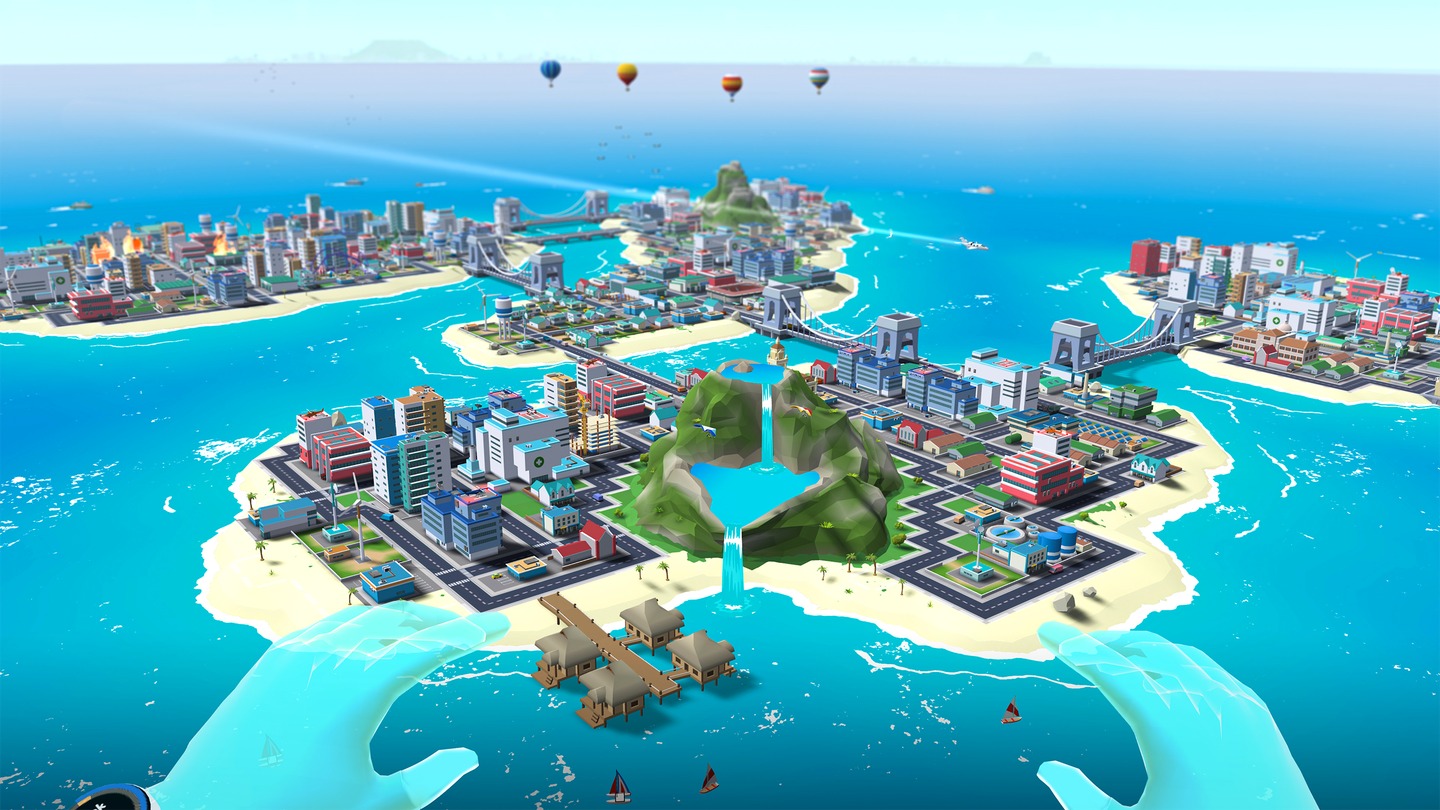
Little Cities is an impressive effort from Purple Yonder and an accomplished city simulator. It effectively adapts the genre’s traditional mechanics into a distilled format that feels native and well considered for VR. The focus on immersive city design is the right approach, backed up by brilliant visuals and audio. The control scheme and UI fades into the background, as it should, leaving you to intuitively build your city without it ever getting in your way.
The payoff for this distilled format is a slightly easier game than you might expect, but it remains worth your time. Anyone could pick up Little Cities and have a ball – it’s easy to understand, charming to look at and intuitive to play. From here, it’s all about taking the foundation and building it out. Just like the islands in-game, I hope Purple Yonder takes this start and builds bridges to something more expansive and complex across the game’s lifecycle. With all the basics integrated so succinctly, I look forward to seeing what updates, expansions and DLC lie on Little Cities’ horizon.

UploadVR recently changed its review guidelines, and this is one of our new Recommended review labels. You can read more about our review guidelines here.
This review was conducted on the Quest 2 version of the game. What did you make of our Little Cities review? Let us know in the comments below!

